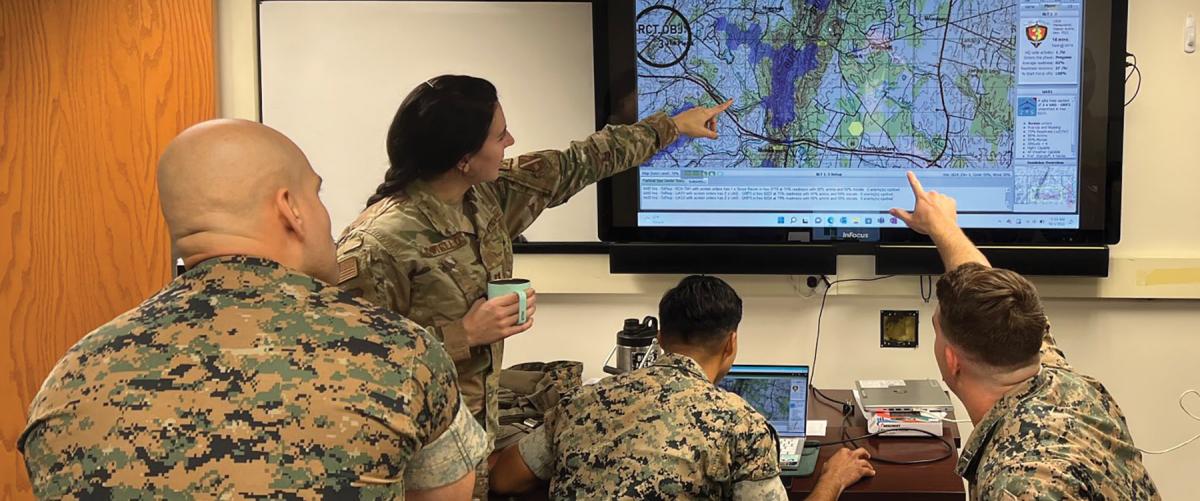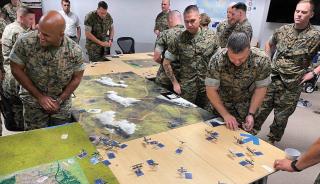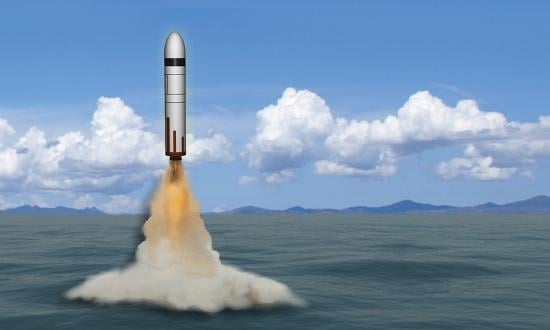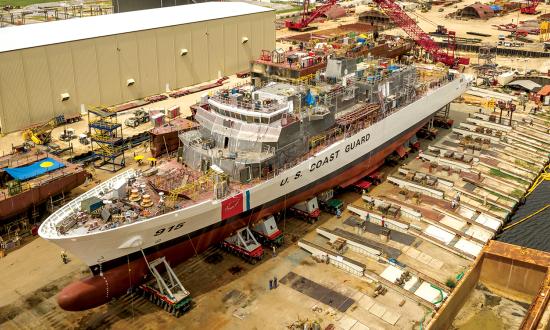Marine Corps University (MCU) has unleashed the power of cloud computing to enhance its wargaming professional development. In September, the Brute Krulak Center for Innovation and Future Warfighting at MCU unveiled its Wargaming Cloud, a platform-independent tool for teaching a variety of skills and objectives.
Retired Colonel Tim Barrick is the wargaming director for MCU. (Note that the MCU wargaming program is distinct from the much larger Marine Corps Wargaming and Analysis Center, which broke ground in 2021.) Barrick says the Wargaming Cloud is primarily educational wargaming, not future force design concept testing. Educational wargaming, he says, “is about helping to create critical thinkers to hone adaptive warfighting.”
“When do you recognize your plan has to change?” says Barrick of adaptive warfighting, citing a DARPA study of World War II combat. Battalions that displayed adaptive warfighting fared better than those that did not, the study found. But it is one thing to say, “Adaptive warfighting is good,” and another to teach Marines how to (in Barrick’s word) “discern” when the moment to change has arrived. But it is the critical factor in a fight, and something wargaming can teach, especially with the methods the Wargaming Cloud allows MCU to employ.
On 3 October, the cloud had its first chance to shine (if you’ll pardon the mixed metaphor). In conjunction with the Expeditionary Warfare School, the MCU wargaming team staged an event with 240 students, using an adapted version of Flashpoint Campaigns, a game with a lot of customizability.
“We took a Cold War game and adapted it to fight a contemporary problem,” Barrick says.
Teams of two to three captains took turns fighting a computer-driven Red Team to defend a virtual version of the Fulda Gap–like Hopewell Gap near Manassas, Virginia. The game’s flexibility allowed the exercise planners to build in contemporary capabilities for the Russian and Chinese Red Team as well as for the Marines.
And that meets one of educational gaming’s subsidiary goals—learning capabilities. Barrick calls it a forcing function: To succeed, players must learn their own and their adversary’s capabilities.
Another secondary goal is to teach operational art, risk assessment, and especially planning. As General Dwight D. Eisenhower put it: “Plans are worthless, but planning is everything.” Barrick says game players have to run up against the idea that “no plan survives contact with the enemy,” and then choose when and how to adapt.
It does not always take a computer to teach these skills, and here, historical games can be especially useful. In some, students must wrestle with decisions actual commanders had to make during real events. In others, the technological limits of an era allow focus on discrete skills. Barrick gives an example of a game recently played by a large group of gunnery sergeants—Wings of Glory, a tabletop game that simulates World War I aerial combat.
Ahead of play, the Marines had to develop a collaborative plan. But technology constraints meant that, once the “pilots” took off, they could not communicate with other players unless their aircraft were positioned on the board closely enough that hand signals could be used. This required players to assess what they could see unfolding and make decisions in isolation based on it.
According to Barrick, the critical questions for players are “How risk averse are you? [And] how do you apply commanders intent” as developed in the preflight plan? These kinds of games are a great building block for adaptive warfighting development.
“When you put that effort into a plan and then it succeeds,” Barrick says, “that’s very rewarding.”
The Wargaming Cloud has been in the works for two years. Its backbone is a Microsoft Azure cloud that students and faculty can access from just about any internet-enabled device. Before the cloud, it was essentially impossible to assign a game as homework, Barrick says. Now, with seven different games (so far) on the Wargaming Cloud, MCU has a significantly expanded capability to engage its students in and out of the classroom.
Barrick’s staff of one—himself—will soon grow to three, but the benefits to Marines at MCU should grow a lot faster. The technology and capability may be a bit behind what advanced gamers see outside the Marine Corps, but it is a big step inside it. And the knowledge and skills players develop depend at least as much on the process as the technology. Further, there’s something to be said for the Marine Corps’ careful approach to new technology when measured against the headlong rush toward “innovation” and “transformation” that have plagued other services in recent years.







